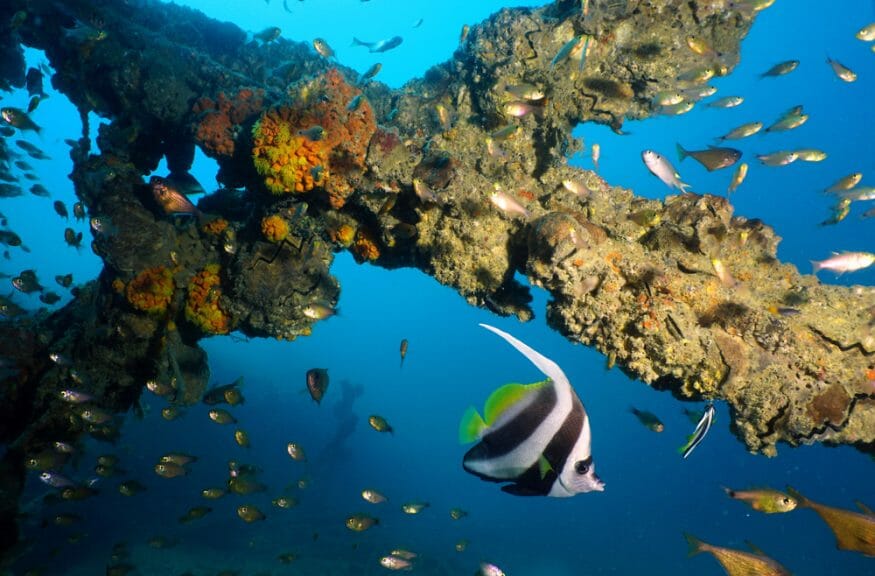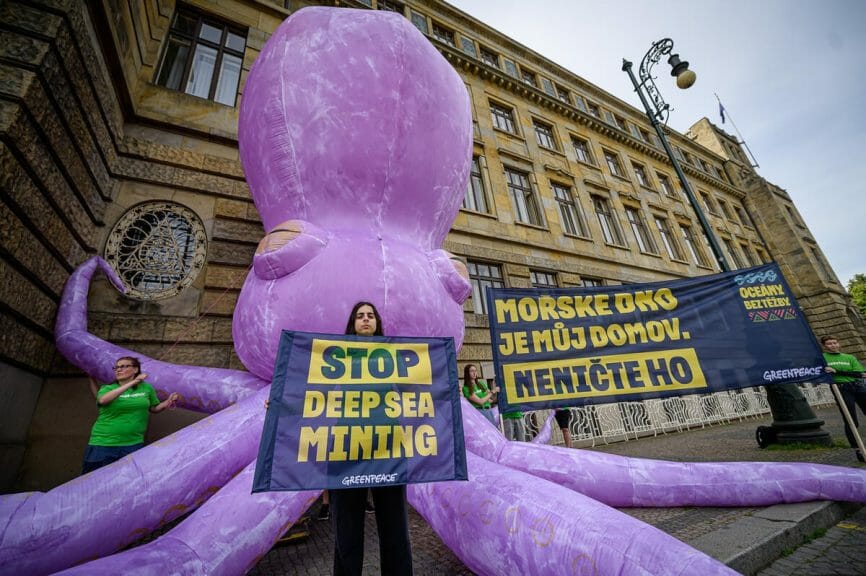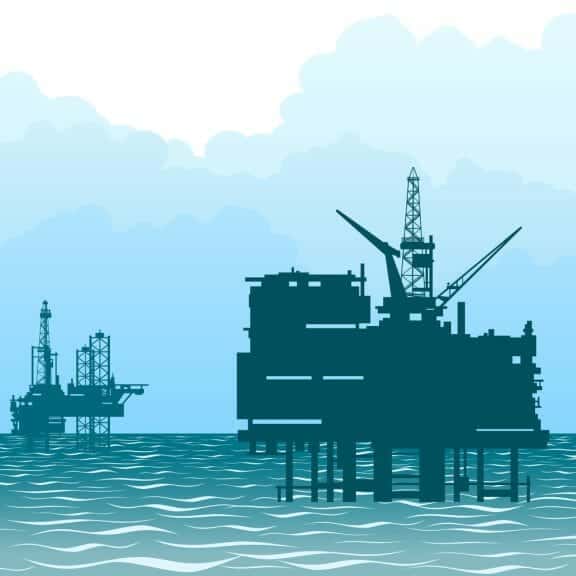Deep-sea mining is a fairly new industry yet a looming threat to deep-sea ecosystems. After decades of talks, nations agreed on a UN accord to act against the practice.
Let’s dive deep into this baleful industry that can potentially disrupt our ocean ecosystems and endanger unique deep-sea creatures.
A bunch of nations and giant corporations are targeting the world’s high seas to carry out mining for commercial purposes while the rest of the world is combatting such detrimental practices.
In March, A historic ocean treaty was born, the first of its kind. A baby step is taken to conserve the ‘high seas’. Nations are gathering for their next big step in July.
Let’s take a closer look.
What is Deep Sea Mining?
Deep-sea mining is a mining practice that aims to extract minerals and metals from the ocean depths for commercial purposes.
Over the years, large corporates, mostly tech companies, have proposed the mining of deep-ocean minerals such as polymetallic nodules and cobalt-rich ferromanganese crusts. These mineral-rich deposits contain metals of interest to mining industries, which are cobalt, nickel, copper, manganese and some rare earth elements.
These nodules are found on areas of abyssal plains in the Clarion-Clipperton Zone (CCZ) in the eastern Pacific. The CCZ is largely protected by the International Seabed Authority (ISA), a UN regulatory body.
Deep-sea mining as an industry has not flourished yet. It is in the experimental stages. But ocean conservationists, scientists and researchers fear the unknown detriments of such unsustainable operations on the deepest ocean floors in the near future.
Why is it a Looming Threat?
The proposed deep-sea mining has immense potential to disrupt the structure of ocean ecosystems and the vast biodiversity beneath the seas.
Scientists and young researchers talk about how deep-sea mining can cause the removal of mineral-rich surfaces that are critical habitats for benthic communities.
As a deep-sea ecologist and researcher at The University of Liverpool, Lucy Goodwin says, “The extracted polymetallic nodules can take up thousands of years to settle on the seabed. That is several million square kilometres. The removal of these nodules can also impact the micro-macro-organisms and the seafloor chemistry.”
Goodwin highlights, “If 30% of the high seas can have strong protections in place then the communities can hopefully continue to thrive and provide essential ecosystem services.”
What’s Deep Down?
The deep sea is home to unique unknown creatures beyond our understanding, a whole other hidden world beyond our eyes. But little do we know about the deep seas and their ecosystems – Is it not a knowledge gap? The unique variety of species on the seabed is still unknown or rather little known -to us and science.

Researchers are still in quest of an answer, still exploring the seabed. Jon Copley, a scientist and marine ecologist digs deeper into the matter and says,
“A recent study of the Clarion-Clipperton Zone, extrapolating from the rate at which surveys have encountered previously unknown species in the region, indicates that there are probably about 8000 different species of larger animals in total living on the seafloor in that region where polymetallic nodule mining is planned. This estimate is indicative of a specific region. But what about the whole of the deep ocean? And that’s why there’s a growing call for a pause in the progress towards mining.”
Richard Teasdale, a local group coordinator and Campaigner at Greenpeace in Sheffield, firm in his resolve, recalls their global campaign ‘Deep-Sea Mining Action’ and stresses how little we know about the ocean depths and the life it holds.
“We know less about the seabed than we do the surface of the moon. It’s quite mind-boggling to say what the seabed covers. And we’re talking obviously over half the surface of the planet here. And we know less about that than we do the seabed. So, the mining industry wants to go in there before we even know what’s there.” says Teasdale.
No Deep-Sea Mining Action
Greenpeace, a global environmentalist group has been in the long run for protecting the oceans and its ecosystem for decades.
The ‘Global Day of Action’, a global campaign organized by the environmentalist group, called on governments to act against deep-sea mining in March this year. Thousands waved their green flags across the UK and worldwide to mark their opposition to deep-sea mining. For Teasdale and other campaigners at Greenpeace, it was just another day of resilience and passion.
After years of talks, several nations agreed upon the UN’s ocean treaty, called the ‘High Seas Treaty’ in March 2023. The treaty aims to protect 30 percent of the world’s high seas as ‘Marine Protected Areas’ and ocean ecosystems by the year 2030. But in reality, we conserve only 1.2 percent of the high seas to date, as published in BBC News.
This historic treaty is a watershed moment. However, scientists raise concerns over the practicality and enactment of these conservation measures considering the climate emergency.
Experts explain the critical need for regulations and conservation agreements as the two-year pause on deep-sea mining expires this year.
What is the next step?
Two weeks ago, the UN International Seabed Authority (ISA), hosted a 3-week conference on deep-sea mining in Kingston, Jamaica. Several countries, scientists, researchers and seafood industries now have called for a moratorium on mining plans.
In 2021, the Pacific nation of Nauru in Micronesia revealed its interest in commercial seabed mining, which triggered the ‘two-year halt’ on deep-sea mining.
There is growing resistance from countries around the world to deep-sea mining. As per Greenpeace, Canada, Brazil, Ireland, Finland and Portugal have joined the run. Meanwhile, Norway, China, South Korea and Russia decided to open its waters to deep-sea mining.

Scientists Like Copley suggest more sophisticated technology as sustainable alternatives to seabed mining and climate change. “New battery technology now being developed for electric vehicles, for example, may not need the cobalt and nickel that are used in current EV batteries. Much better recycling of metals could also blunt the rising demand to some extent and most fundamentally, we need to consider how we live, and design the places where we live and work.”
“To tackle the challenges of climate change and our requirements for resources overall requires political and social innovation at least as much as technological innovation. That also requires listening to, and working with, people who depend on the ocean for their livelihoods.”
Climate change is already pushing us to adopt sustainable approaches towards environmental conservation. Global campaigns and conservation agreements cannot be considered mere facades but crucial steps to many more steps in the future. Deep-sea mining is brewing. But It is never too late to put a curb on such unsustainable practices before there are any irreversible impacts.














